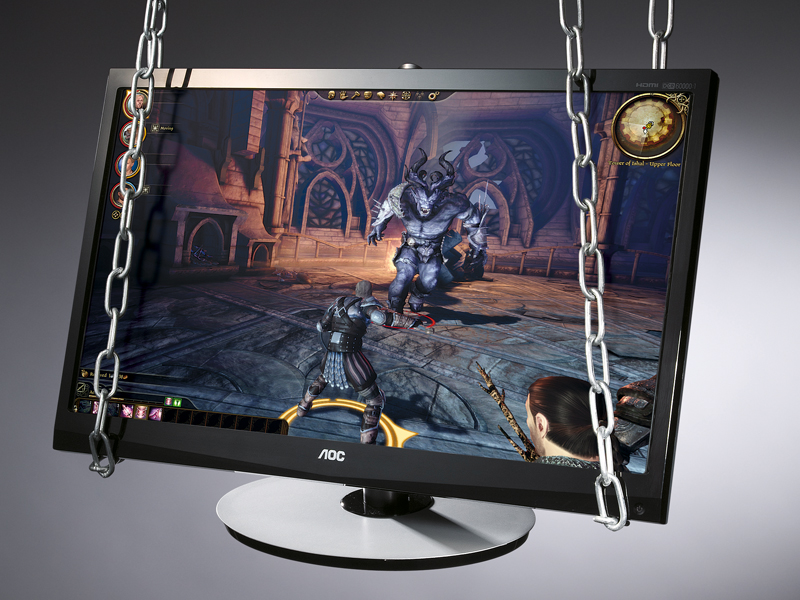TechRadar Verdict
Clearly the pick of the bunch if you want to have the biggest possible screen
Pros
- +
Sheer size
- +
Good black levels
- +
Upmarket syling
Cons
- -
It's still a TN panel
Why you can trust TechRadar
There's a creeping cancer that is gnawing its way through the monitor market of late. A debilitating and highly infectious disease that's now approaching epidemic proportions. We speak, of course, of the inflationary process that has taken hold of quoted contrast performance. AOC's latest 24-inch monitor, the 2434PW, is a case in point.
Proudly plastered on its bezel is a sticker proclaiming an eye-catching ratio of 60,000 to one. Stunning stuff indeed, if it were true in practice.
The problem is, it refers to what the 2434PW is capable of thanks to dynamic contrast. That's a technology which adjusts the strength of the backlighting according to the brightness of the image data being fed to the screen. The darker the scene, the more the backlight intensity is reduced.
Superficially, this appears to make sense. But in reality it's a pretty clumsy kludge. What it can't do is achieve darkness or brightness at the same time. It's one or the other.
Hence, there's no substitute for what we would call good static contrast performance. In other words, the ability of an LCD panel to occlude the backlight when individual pixels are set to black.
Contrast is a lie?
Our advice, therefore, is to ignore any quoted contrast claims by manufacturers that are significantly higher than 1,000 to one. This can be rather tricky when manufacturers, including AOC, are coy about a monitor's static contrast abilities.
Luckily, PCFormat has a light meter handy and can reveal the truth. In the case of this particular 24-inch 1080p panel, that truth is 793 to one. Ironically, that's actually a pretty good showing for a monitor with a TN-type LCD panel.
In fact, anything in the region of 800 to one or better will get the job done very nicely, particularly when it comes to watching movies in a dark room.
We're happy to report that the 2434PW does indeed achieve pretty good black levels and in turn we would encourage AOC to be much more up front about this monitor's static contrast. This monitor has nothing to be ashamed of.
Indeed, there's plenty more to recommend it. It's a very rapid monitor with 2ms pixel response times making it highly suitable for a gaming rig. What's more, the full 1,920 x 1,080 screen resolution provides plenty of desktop elbow room, along with the ability to do full justice to full high definition 1080p video content.
There's encrypted content support, too, courtesy of an HDCP compliant HDMI port.
The stand and chassis also have an upmarket consumer electronics vibe and not a little practicality to boot, thanks to a well executed cable-tidying solution at the rear.
Overall, it looks like a lot more than £190's worth of panel. Do not, however, get too excited. In most regards, this monitor is little better than your average TN-powered budget panel.
Overall, it's a lot less rich and vibrant than a PVA panel and a chunk less accurate than an IPS screen.
Moreover, the difference between its default colour balance and the colour space after calibration is pretty immense. That's fine if you have a calibration tool to hand, but a bit of a pain if you don't.
Follow TechRadar Reviews on Twitter: http://twitter.com/techradarreview
Technology and cars. Increasingly the twain shall meet. Which is handy, because Jeremy (Twitter) is addicted to both. Long-time tech journalist, former editor of iCar magazine and incumbent car guru for T3 magazine, Jeremy reckons in-car technology is about to go thermonuclear. No, not exploding cars. That would be silly. And dangerous. But rather an explosive period of unprecedented innovation. Enjoy the ride.
